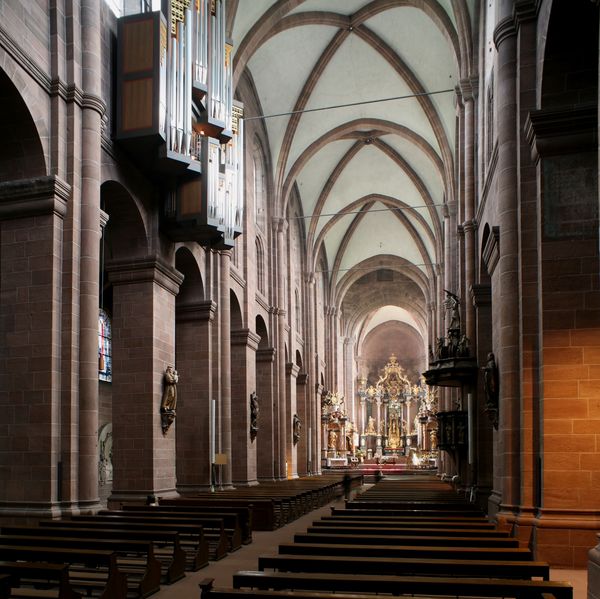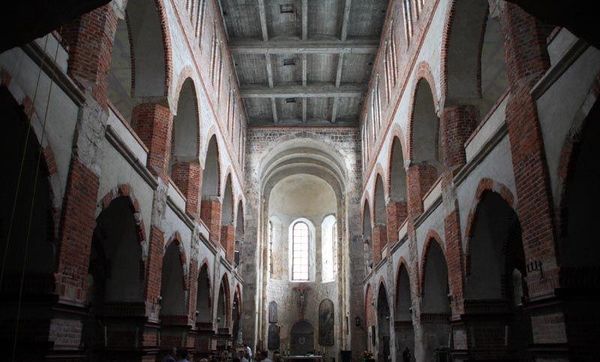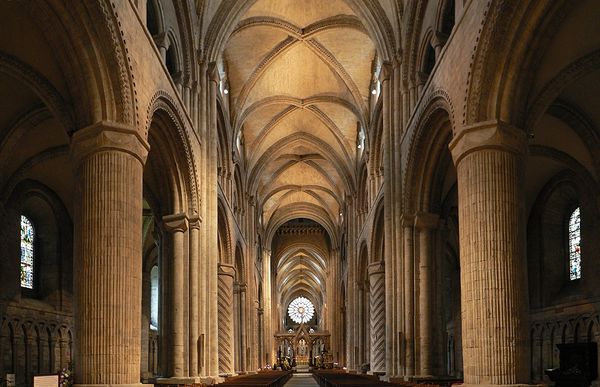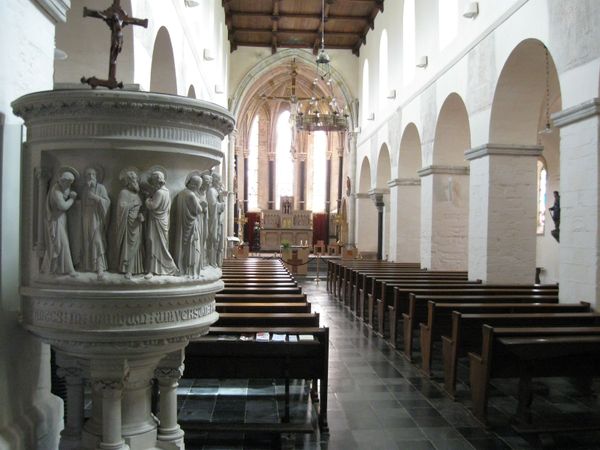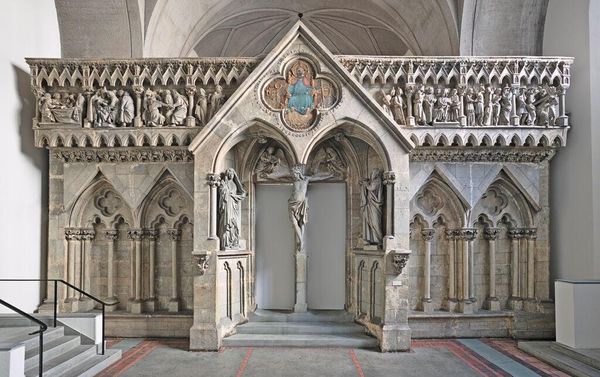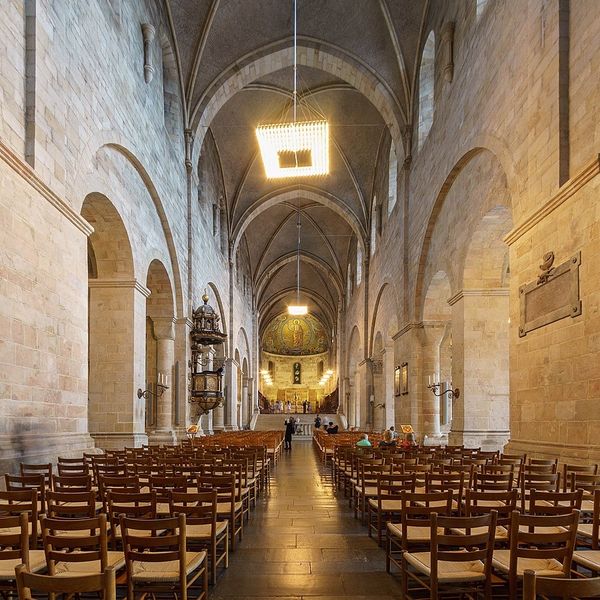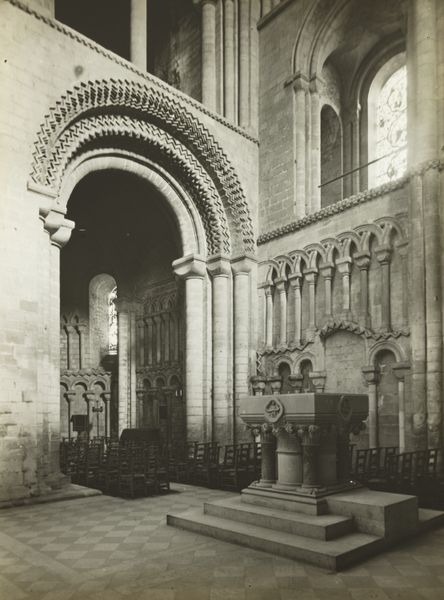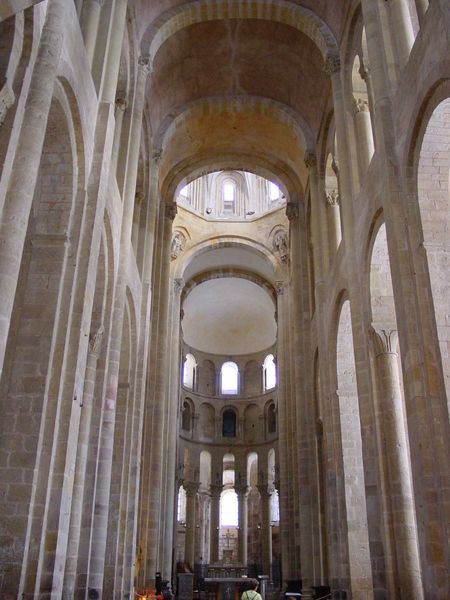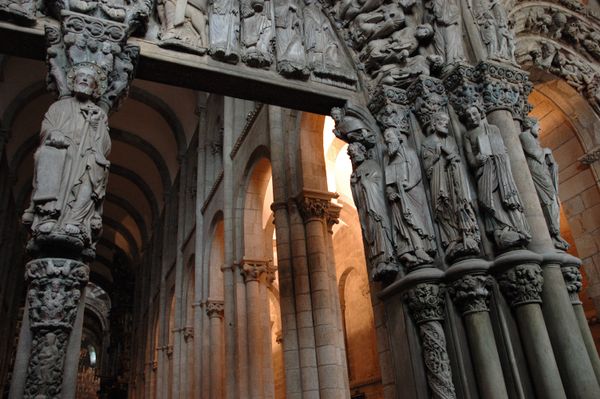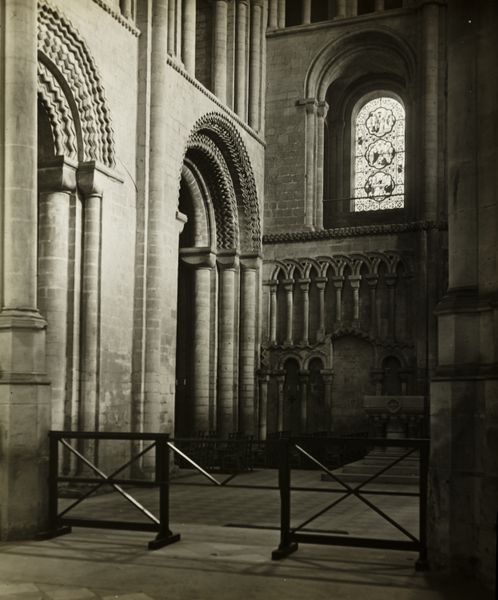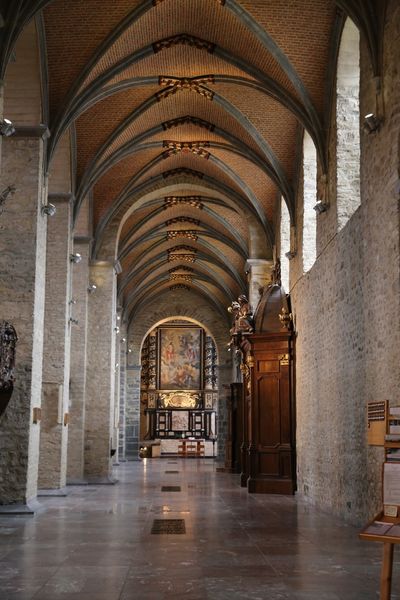
architecture
#
medieval
#
holy-places
#
historic architecture
#
romanesque
#
arch
#
history-painting
#
architecture
#
historical building
Copyright: Public domain
The Interior of Speyer Cathedral in Germany, erected during the Romanesque period, is a symphony of stone, light, and symbolic intent. The basilica's nave, framed by rows of imposing columns, directs the gaze towards the altar, a sacred space that embodies spiritual aspiration. Consider the column, an architectural and symbolic motif. From the temples of ancient Egypt to the colonnades of Greece, the column signifies strength, stability, and support. Its use here reflects not merely structural necessity but a profound connection to architectural traditions and a yearning for monumental permanence. These columns, like those in ancient temples, act as intermediaries between the earthly and divine realms. Note the arches, rounded and rhythmic, that define the space above. Their continuous curves are reminiscent of Roman engineering, but here they represent something more. The arch is a symbol of connection and transition, a doorway that leads us from one state to another. Thus, the cathedral becomes a vessel of cultural memory, each element resonating with historical and psychological echoes, inviting us to reflect on humanity's timeless quest for meaning.
Comments
No comments
Be the first to comment and join the conversation on the ultimate creative platform.
